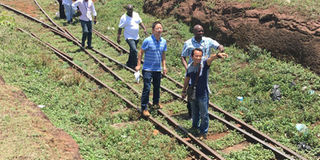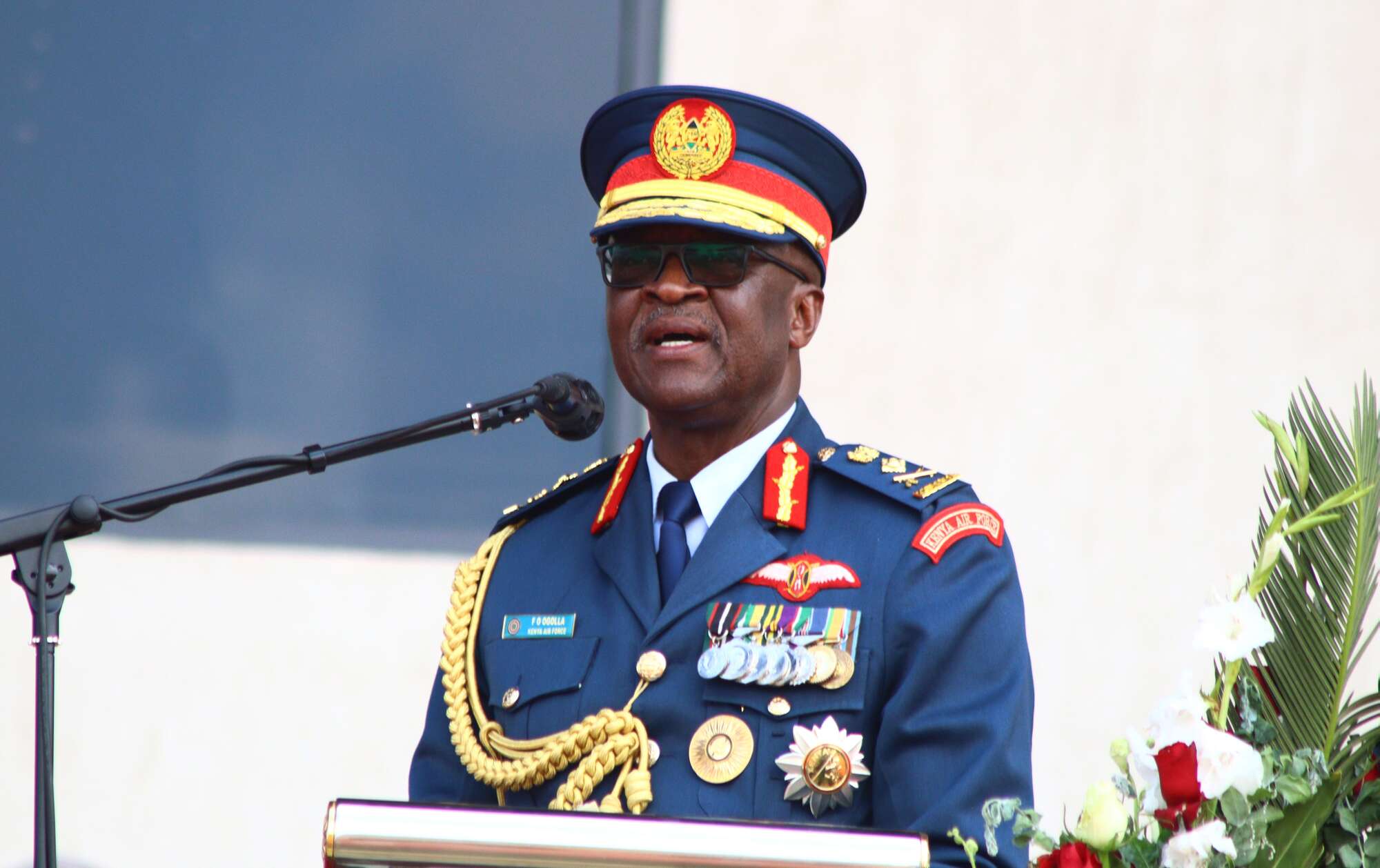Uganda SGR in limbo as China develops cold feet on project funding

Efforts. Officials survey an area in Tororo District in November 2017 where the Standard Gauge Railway is to pass. PHOTO BY RACHEL MABALA
What you need to know:
"When the SGR is finished, it will take 24 hours from here (Mombasa) to Kampala. That means (President) Uhuru and his government have reinforced their support for the hinterland economies and the economy of Kenya,” President Museveni
Kampala. The weekend news that China had turned down Kenya’s funding request to complete the Naivasha-Malaba section of the Standard Gauge Railway (SGR) has hit Kampala like a thunderbolt, and sent tremors to more inland countries.
Originally conceived in 2008 as a flagship physical link under the Northern Corridor Infrastructure Project, the region’s leaders hoped the rail connectivity would significantly slash haulage costs and spur economic development.
Kenya built and has an operational SGR from Mombasa port city to its capital, Nairobi, while work on the stretch to Naivasha is ongoing.
The country’s leaders were looking east to China, as was Uganda that requires $2.3b for the project, for financing all segments of the route planned to connect to South Sudan and Rwanda through Nimule and Mirama Hills border points, respectively.
The Chinese government, according to Kenyan media, informed President Uhuru Kenyatta, who was in Beijing for the Second Belt and Road Forum for International Cooperation, that it would not bankroll the Naivasha-Kisumu-Malaba SGR construction.
The news plunged Kampala officials, engaged in loan negotiations from China jointly with Kenyan counterparts, into confusion and tied the tongues of many on options available for Uganda that has not put in place a metre of the SGR.
SGR secretariat officials yesterday referred our inquiries to Works and Transport Minister Monica Azuba, their political overseer.
“I knew a (Kenyan) team was going to Beijing, but I don’t have any information about what happened,” she said by telephone, adding: “I will have to consult with my colleague (Kenya’s Transport Cabinet Secretary) before I can offer our position.”
The 273-kilometre Malaba-Kampala planned SGR works was plagued by problems from the outset: the contract award was crippled by infighting by rival Chinese firms; project cost was inflated by $120m (Shs450b); and, a tango among technocrats resulted in overhaul of the SGR executives in Uganda.
With no end to the inordinate delay by Uganda to start SGR works, the more inland Rwanda began prospecting a rail link to the sea through Tanzania, meaning Uganda’s planned SGR extension to Mirama Hill border would be economically less viable.
That, however, was not the biggest headache. Uganda, whose debt portfolio now towers at Shs41 trillion, according to official statistics, with most of the money owed to China’s Export-Import (Exim) Bank, could not find cash to build the railway.

At work. Workers on the Kenyan side of SGR. COURTSY PHOTO
It currently sits on Shs10.9 trillion Chinese debt picked for the newly-commissioned Isimba and under-construction Karuma hydro dams, which combined will add 783 megawatts on the national grid, alongside bankrolling the construction of Entebbe expressway, Entebbe International Airport upgrade, the National Backbone and E-Government Project, and establishment of four industrial parks.
As a landlocked country, Uganda, as well as its inland neighbours including eastern Democratic Republic of Congo, which provides a huge market, rely more on Kenya for imports and exports.
Kenya has downplayed the news that its SGR completion financing request to China has run into the wall, with President Kenyatta’s Chief of Staff, Mr Nzioka Waita, saying “it is important to note that the question of funding for the extension of the standard gauge railway from Naivasha to Kisumu was not on the agenda of the meeting between the two presidents”. “It, therefore, follows that the president cannot be said to be returning home empty-handed for something he did not request.”
The semantics apart, Uganda officials were last evening scrambling to see how to save a project long vaunted as a panacea to Uganda’s costly international trade.
Transport costs
It costs $3,000 (Shs11m) to truck a tonne of goods from Mombasa to Kampala, almost double the $1,600 (Shs6m) spent to haul the same quantity by rail.
While on a visit to Kenya late last month, President Museveni outlined how SGR construction would cut back transportation costs and spur economic growth for all linked countries. In the coming years, he noted, cargo haulage would shift from roads to the railways while fuel would be piped.
“It will be cheaper, faster, safer and away from the roads so that the roads remain for the drunkards and other people, if they want to kill themselves without the assistance of oil tankers and cargo.”
Mr Museveni even took a four-hour ride from Mombasa to Nairobi on the Madaraka Express, as the passenger train on the SGR is called, and said in jest that he would reciprocate the honour of being the first foreign head of state take that trip, by taking photos to keep in his album and show Ugandans. It was a jest at the time, but the turn of events a month later mean the financial blues could potentially consign Uganda’s SGR to a pipedream.
The country, which has already paid out Shs60b in compensation to land and property owners along the SGR route, hoped to commence works once Kenya extended its line to Malaba border post.
China’s offer
Kenya Transport Cabinet Secretary, Mr James Macharia, told Daily Nation, a sister publication to this newspaper, that Beijing has instead offered Kenya Shs1.4 trillion to revamp the existing metre gauge railway from Naivasha to Malaba. This would be linked to the yet-to-be completed Nairobi-Naivasha SGR section.
The SGR secretariat in Kampala, housed at Uganda Railways Corporation, has had more than 100 employees and the project’s physical evidence ironically has been more wheels and no rail sleeper.
The staff numbers have over the months dwindled, fuelled in part by financing uncertainty for the project and infighting. There is no official explanation for China’s change of heart, but one senior government source familiar with the negotiations said on condition of anonymity that Beijing is unsure of the capacity of both Uganda and Kenya to service the colossal debt it is extending.

Efforts. The standard gauge railway project in Kenya. Its construction was funded by China. COURTESY PHOTO
There is also concern about the business viability of the investment after Kenya recorded Shs400b loss last financial year due to less-than-projected cargo volumes on SGR. Both countries, however, say their debt stocks are within sustainable levels in spite of red flags raised by civil society organisations.
SGR is a classification of modern railway agreed upon under the African Union SGR protocol, of upgrading and linking the continent’s railway system to facilitate continental integration. The existing railway line, left behind by the British colonial administration, is classified as meter gauge, an outdated model.
Uganda and Kenya first agreed to construct the SGR in 2008 but the deal was not concretised until 2012. By then, Kenya was on the last lap of negotiations with China for the Mombasa-Nairobi SGR line, whose loan was released in 2014.
Timelines to SGR project
2008: Uganda-Kenya moot idea for a new railway line
2010: President Museveni invites China Civil Engineering Construction Corporation to ‘upgrade’ oil railway
2011: Kenya starts negotiations with China
2012: Uganda signs MoU with China Civil Engineering Construction Corporation for railway project
2013: Uganda and Kenya agree on SGR under Northern Corridor Integration Projects
2014: Kenya gets first tranche of financing from China for the Mombasa-Nairobi line
2014: Uganda cancels China Civil Engineering Construction Corporation’s tender, hands it to China Harbour Engineering Corporation
2015: Kenya starts construction of Mombasa-Nairobi section
2015: Uganda starts preparatory works on Malaba-Kampala section
2017: Kenya commissions Mombasa-Nairobi line, starts work on Nairobi to Naivasha section
2018: President Museveni travels to Beijing hoping to get funding for SGR but fails
2018: Uganda announces shelving SGR pending release of first tranche of loan by China
2019: China hold funding for Naivasha-Kisumu, Kisumu-Malaba sections




